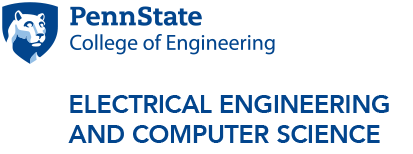Gallium oxides devices for grid-scale power electronics and high power switched mode RF amplifiers
Abstract
Within a decade of the first demonstration of a MESFE device, monoclinic b-Ga2O3 (Ga2O3) devices have made incredible progress in breakdown voltages, power device figure of merit and high-speed performance. It has emerged as a promising ultra-widebandgap semiconductor for next generation power, GHz switching and RF applications. In this talk, we will present an overview of our studies on fundamental transport properties, kilovolt class power MOSFETs and aggressively scaled RF devices. The large bandgap of Ga2O3 leads to a high critical field strength. This high field strength in combination with demonstrated room temperature mobility and calculated electron velocity leads to a higher Baliga’s Figure of Merit (BFoM) and Johnston Figure of Merit (JFoM) than current commercially available widebandgap technologies. Additionally, the large bandgap also enables high temperature operation and radiation hardness making it attractive for space applications such as Mars and Venus missions.
In the first part, we will discuss the deep insights gained from the first-principles based transport calculations in Ga2O3. We will discuss the limits to low field mobility, saturation velocities and impact ionization coefficients. The impact of the plasmon-phonon coupling on the phonon limited transport will be discussed. We will present the experimental signatures of plasmon-phonon coupling and anti-screening behavior in ionic gated accumulation layers.
Next, I will describe our work on the lateral MOSFETs with improved field plate design and beyond-kV breakdown. Temperature dependent analysis and device simulation suggest an extrinsic breakdown mechanism outside the channel. A simple and yet effective SU-8 polymer passivation technology was developed that results in significant improvement in breakdown voltages. The higher field strength of the SU-8 polymer enables a significant increase in breakdown voltage to 8 kVs in lateral MOSFETs. However, these devices show a high Ron, which is due to the depletion caused by RIE of the channel. We will present the use of ultra-high vacuum annealing techniques to improve the on-resistance of the devices still maintaining the multi-kilo-volt rating of the devices.
Due to its high JFoM, Ga2O3 is a potential candidate for high power density RF amplifiers. We will also present the performance advancement that can be obtained in RF power performance using Ga2O3 technology. We will present the challenges in the technology and potential solutions. We will present the experimental DC and pulsed measurements on laterally scaled MOSFETs with 100 nm gate length. Severe DC-RF dispersion was observed which is attributed to the RIE damage and surface states on the oxide. Passivation of the devices show reduced current collapse. Using aggressive gate lengths and gate-source spacing scaling, (AlxGa1-x)2O3/Ga2O3 heterostructure FETs were fabricated that show record high RF performance. The device transconductance was limited by the regrowth interface resistance. Ex-situ silicon nitride passivation was shown to be effective to reduce DC-RF dispersion.
Bio
Dr. Uttam Singisetti is a Professor of Electrical Engineering (EE) at the University at Buffalo (UB). He received his PhD in Electrical and Computer Engineering from the University of California, Santa Barbara in 2009. He received MS degree from Arizona State University in 2004 and BS degree from the Indian Institute of Technology, Madras in 2001. He joined the EE department at UB in Fall 2011 and was promoted to Associate Professor in 2017 and full Professor in 2021. His research interests are in the areas of low-power devices for logic and memory; novel III-N based THz devices and next generation wide and ultra-wide bandgap materials and devices. He was the first to demonstrate high frequency enhancement mode devices in the N-polar GaN technology. During his Ph.D. he worked on III-V MOSFET devices, where he demonstrated a fully self-aligned III-V MOSFET technology. At UB, Singisetti has carried out seminal work on Ga2O3 devices and materials in the last few years. He carried out pioneering fundamental work in understanding the low field and high field transport in Ga2O3 that has led to great insights into the electron dynamics in this semiconductor. His research group was the first to identify the mobility limiting mechanism in Ga2O3, demonstrated multi-kV-class lateral Ga2O3 devices, and highest RF performance in scaled Ga2O3 devices. He is recipient of Senior Researcher of the Year (2019-2020) award at UB. He has co-authored more than 150 publications in peer reviewed journals and conference proceedings with ~2800 citations. He served in the technical program committee of the IEEE Device Research Conference and on the IEEE EDS Technical Committee on Compound Semiconductor Devices and Circuits. He is currently the Chair of the GOX conference committee.
Event Contact: Iam-Choon Khoo



